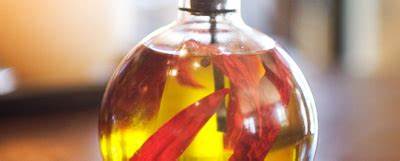Calamus Root/Sweet Flag - ACORUS CALAMUS






Calamus Root/Sweet Flag - ACORUS CALAMUS
Aroma and Taste
Highly unusual. One of the strangest odours you will ever encounter and a case of love it or hate it for most people. It is a peculiarly masculine aroma, and certainly it's preferred by men more than by women; perhaps that's why it's used in perfumery, to attract men!
Stability and Shelf Life
Stable,easily lasts eighteen mon this, probably reliably for two years.
Properties and Applications
Canadian calamus contains none of the hepatotoxic ketone beta-asarone, making it completely safe for use in aromatherapy both internally and externally. European and Asian calamus contain high levels of beta-asarone and should not be used for aromatherapy.
Calamus is a specific for the liver and can be used with Greenland moss in topical compresses and poultices for liver infections and dysfunction and hepatitis. French aromatherapy experiments by Dominique Baudoux with both topical and internal use of these two essential oils have yielded some very promising results in treating tumors and cancers in the liver, and the hydrosols are worth further exploration.
A seven day test of Aromatic Tincture of milk thistle and calamus-root hydrosol worked wonderfully well in detoxifying the liver and gallbladder, and it is certainly nicer and easier to take as a treatment than the better-known lemon and olive oil gallbladder cleanse and appears to be similarly effective.
Calamus is best known in perfumery, where it is used as a fixative and base note. The hydrosol makes a gently astringent aftershave on its own or combined with sandalwood, cedarwood or bay laurel. My father reacted more positively to calamus than to any other aroma I have ever offered him; he practically grabbed it out of my hand and declared, " That's what I want in an aftershave!" He got it.
Reference: Hydrosols: The Next Aromatherapy: Suzanne Catty
Articles - Most Read
- Home
- What are Hydrosols
- What are Hydrosols-2
- The Monographs
- How to Make a Hydrosol
- Distilled or Extracted Specifically For Therapeutic Use - 3
- Table of Common Latin Names and pH Values - F - O
- Kurt Schnaubelt
- What isn't a Hydrosol?
- Table of Common Latin Names and pH Values - P - S
- Wholly Water!
- Blue Babies
- Supply and Demands
- Mature Skin
- Recipes Alpha F
- Hydrosols In The Marketplace
- Hemorrhoids
- Chemicals: Friends or Foes?
- Nelly GrosJean
- Water as Medicine
- The Educated Consumer
- Influences
- Genitically Modified Plants
- Water Quality
Articles-latest
- Daucus carota/Wild Carrot Seed - pH 3.8-4.0
- Cupressus sempervirens/ Cypress-pH3.5-3.7
- Coriandrum sativum/Coriander Herb-and-Seed
- Comptonia peregrinal/Sweet Fern- pH 3.8
- Citrus clementine (fe) Clementine Petitgrain- pH 4.3-4.4
- Citrus aurantium var. amara (flos) /Neroli Orange Blossom-pH3.8-4.5
- Cistus ladaniferus/Rock Rose-pH 2.9-3.1
- Cinnamomum zeylanicum (ec) Cinnamon Bark-pH3.3
- Chamaemelum nobile/Roman Chamomile - pH 3.0-3,3
- Centaurea cyanus/Cornflower/Bachelor's Button-pH 4.7-5.0
- Cedrus atlantical/Cedarwood/Atlas Cedar-pH 4.1- 4.2
- Hydrosols -The PH - Anomalies
- Hydrosols- Establishing Shelf Life and Stability
- Boswellia carterii/FRANKINCENSE
- Asarum canadense/ Wild Ginger/Canadian Ginger
- Artemesia vulgaris / Artemesia
- ARTEMESIA DRACUNCULUS - TARRAGON
- Angelica archangelica / Angelica Root - Hydrosols
- The Key, or More Correctly, the pH - 2 - Hydrosols
- The Key, or More Correctly, the pH-Hydrosols
- The Hard pHacts - Hydrosols
- Calamus Root/Sweet Flag - ACORUS CALAMUS
- Yarrow - Achillea millefolium - Hydrosols
- Balsam Fir - Abies balsamea - Hydrosols

